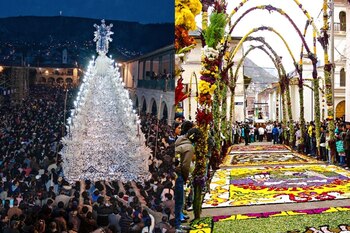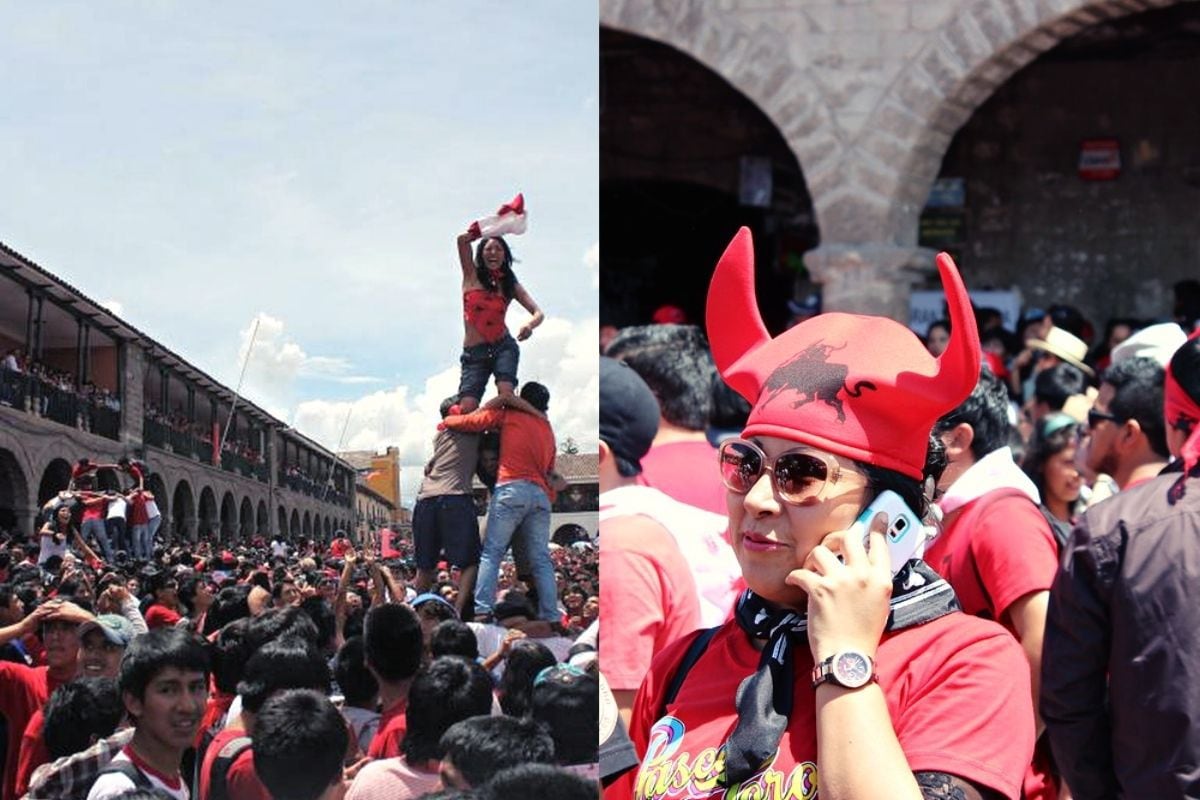
Peru is one of the countries that celebrate Holy Week. This date is celebrated throughout the country, but of all the regions in which it is celebrated this week, there are some that stand out for their fervor and way of celebrating. We have selected 4 departments famous for their Easter celebration.
AYACUCHO
The Ayacucho region has one of the most famous celebrations in Peru and is recognized worldwide. This week's faith and holiday attracts thousands of tourists from all over the world.
The origin of the fervor of this festival is rooted in the viceregal era brought by the Spaniards. Holy Week is practically a mixture of Catholic and Andean tradition. Ayacucho is home to 33 churches and also has the most faithful devotees in Peru, without detriment to the others that exist.
We know that Holy Week starts on Palm Sunday, but in Ayacucho it starts a week earlier. To be more exact, it starts three days before Palm Sunday, that is, on Thursday, the day before “Friday of Sorrows”. During this date, the Virgin Dolorosa and the Lord of Agony leave from the church of La Magdalena, at 7 pm. At night there are ninatoros (ornament in the shape of a bull's head manipulated by a male who throws fireworks in his path) and chamizo (dry broom).
They also take 4 bands and they are the Sorrowful Virgin, the Lord of Agony, Veronica and San Juan. On Saturday the Passion of Christ is celebrated and the religious show is surrounded by yellow and green palms, which can be purchased at the local market and distributed by the municipality.
In the evening it leaves from the Church of Pampa San Agustín, the Lord of La Parra. The name of this saint is due to the fact that the image has a branch of grapes hanging from his hand.
On Palm Sunday all the parishioners gather at the Cathedral Basilica very early in order to receive a blessing for the bouquets of flowers and palms that will later be carried by some children during the procession of Christ seated on a donkey. Already in the afternoon the image makes its triumphant entrance.
Already in the main week the holiday is attracting more visitors. For example, on Wednesday of Encounter, the image of Jesús Nazareno, patron saint of Huamanga, is worshiped. This activity is very important because people attend the procession with large lighted candles and you can see the image of the Virgin Dolorosa and the image of the Nazarene Christ who are separated and as the minutes pass they find themselves on the corner of the Municipality with the old School of Fine Arts. The bands return to the Temple of Santa Clara.
On Thursday, the tour takes place to all the churches. On Good Friday there is a massive procession of the Holy Sepulchre, which starts from the Church of Santo Domingo. This day is very important and it is the one that stands out the most in the religious celebration. A large glass coffin with the image of Christ, on a bed of white roses, runs through the streets, followed by the Virgin Dolorosa and thousands of Ayacucho women dressed in rigorous clothing mourning.
On the Saturday of glory, the holidays begin that leave aside the religious and give way to fun.
There are chamizo bonfires and the Pascua Toro which is taken by the tourist population as a day to drink alcohol, dance to the rhythm of typical songs in the main square and run to the sound of loose bulls in the square. However, the real story is different, these bulls were moved down the street to be given away to nursing homes. “Human towers” are also held in the midst of the hubbub of tourists. A very important point to keep in mind is that tourists must respect local customs.

Cajamarca
Cajamarca, is also known as “La Ciudad del Cumbe”. One of its biggest attractions during this holiday is the Festival of the Crosses of Porcón, and it takes place on Palm Sunday. On this religious date, the image of Lord of Ramos is placed on a donkey, which is responsible for transferring the image throughout the town.
The celebration is extremely large and the whole community of Porcón and the Cajamarquina in general participates.
In this celebration, the crosses are adorned with mirrors, paintings, flowers and other ornaments that represent the soul of the devotees. Each cross reaches a little over two meters in height and weighs between 70 and 80 kilos.
CUSCO
The celebration of Holy Week in Cusco begins with Palm Sunday, where the faithful attend the different parishes of the city carrying palm leaves and woven crosses of the the same floor, which are blessed during the Eucharistic celebrations of the various temples of the city and then brought to the houses and placed behind the doors. This is a symbol of protection for the home.
Holy Monday takes place at one of the most moving moments of the celebration. With a procession it is dedicated to the image of the Lord of the Tremors, which was established after the devastating earthquake of March 31, 1650 that destroyed the Imperial City, which is why this image was consecrated as the “Sworn Patron Saint” of the city.

TARMA
Tarma is a province of Junín, known as “The Pearl of the Andes”, Holy Week is celebrated as one of the best and most striking Andean religious holidays. This holiday begins on Palm Sunday with the blessing of the olive palm branches and the subsequent departure of the procession of Jesus riding on a donkey.
On Holy Monday and Tuesday the sick are remembered. They receive the sacrament of the anointing of the sick. On Holy Wednesday, the Chrism Mass is celebrated with all the priests of the Diocese of Tarma, where the holy oils are blessed.
KEEP READING
Últimas Noticias
Debanhi Escobar: they secured the motel where she was found lifeless in a cistern

The oldest person in the world died at the age of 119

Macabre find in CDMX: they left a body bagged and tied in a taxi
The eagles of America will face Manchester City in a duel of legends. Here are the details

Why is it good to bring dogs out to know the world when they are puppies



